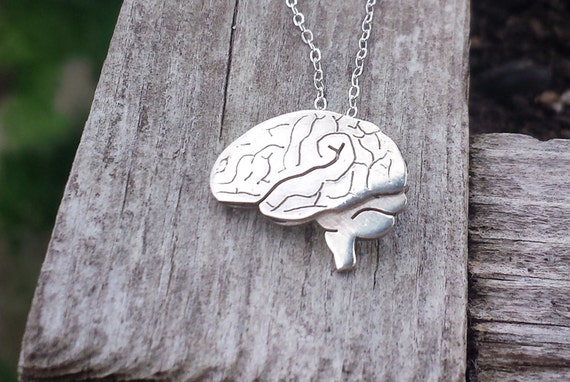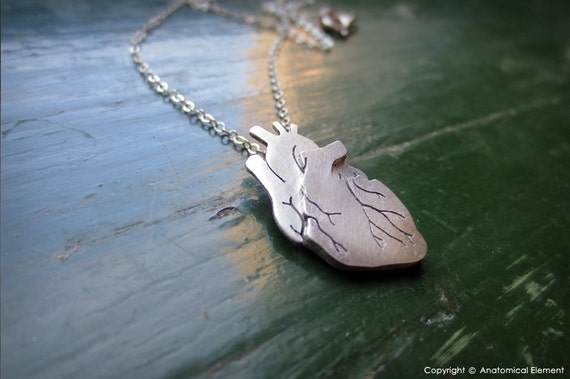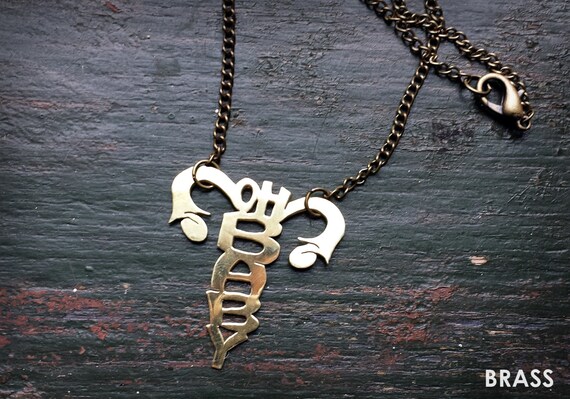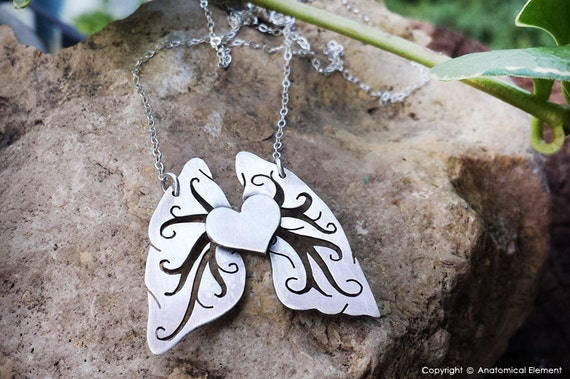Rachel B. Stork Stoltz finds beauty in the components that make up our bodies. She is not concerned with the superficial allure of a stunning individual. She is inspired by the organs that are nestled inside our frames and fundamental to our existence, using metalwork to create jewelry based on anatomy. Rachel discovered the intersection between two passions that are often viewed as opposites, combining her love of science and art into products used for aesthetics and advocacy.
Rachel's personality and experiences resonate with Professor Csikszentmihalyi's analysis of the creative personality. Professor Csikszentmihalyi studied the characteristics that contribute to creativity in individuals. Rachel's mother was an art teacher, suggesting that Rachel may have possessed a genetic predisposition for artistic ability. Rachel was also intellectual from a young age, demonstrating her interest in science by "owning a microscope and dissecting owl pellets at age 8" (Anatomical Element 2015). Her high IQ initially enhanced her creativity and allowed her to gain the foundation necessary for her science background. Rachel's curiosity, enthusiasm and passion propelled her to succeed in science and metalworking.
Rachel received a bachelor's degree in scientific illustration and a master's degree in biomedical visualization, defying gender stereotypes by pursuing degrees related to STEM fields. Csikszentmihalyi suggests that refusal to abide by gender norms is indicative of creative personalities (Csikszentmihalyi 70). Rachel's education provided her with access to the domain for scientists and illustrators, allowing her to receive the training, tools and connections necessary to develop her talent and receive recognition in her field. She navigated the analytical nature of hard sciences with the intuitive impulses of metalworking, moving between extremes of her cognitive processes. Rachel uses playfulness and wit to connect the components of our bodies to their social and cultural connotations.
Rachel is now based in Chicago, creating innovative jewelry and working for a pediatric urologist for a company called CEVL. She designs visuals for online education programs intended to improve efficiency and teamwork during surgical procedures. Rachel's passion for anatomy inspired her to begin creating jewelry, but her motivations have evolved to include advocacy for patients and caregivers. She creates pieces based on clients' personal experiences, utilizing tools like surgical staples that are significant and sentimental for her clients. Her jewelry raises awareness of illnesses, and she has focused primary on cystic fibrosis in the past. Rachel became a caregiver after her husband underwent open heart surgery and gained empathy for others in similar situations, exemplifying the notion that creative individuals express suffering, pain and enjoyment through their artistic mediums.
Rachel is an inspiration for all of us to examine the dark spaces of our world and reveal the beauty within them. She challenges the notion of traditional beauty and encourages others to defy social restrictions, recognizing that beauty exists everywhere. Taboo and eerie topics contain hidden treasures. It is the duty of creative individuals to find beauty in the bizarre.


Sources:
http://anatomicalelement.com/about-events/
https://www.etsy.com/shop/AnatomicalElement?ref=l2-shopheader-name
Csikszentmihaly, Mihaly. Creativity: Flow and the Psychology of Discovery and Invention. New York: HarperCollinsPublishers, 1996. Print.


Sabrina, thanks so much for bringing this artist to my attention! I love the idea of finding a sense of beauty in what the majority of society might consider taboo, utilitarian, or grotesque. Rachel B. Stork Stoltz seems really relevant in light of our generation's struggle to shift beauty standards from the narrow, superficial, and unhealthy images perpetuated in the media back to the diverse, natural, and empowering reality that is the human body and all the shapes it takes across the globe. There's a lot of talk about how we all need to find beauty in every little piece of ourselves, but Stoltz is actually walking the walking by "transforming" what lots of people might find gross into beautiful pieces of art. I also find it really cool how Stoltz uses her background in scientific illustration and applies it in such a novel way. It reminds me of that speech Steve Jobs gave about trusting that the "dots" will connect somewhere down the line. This artist took her body and her scientific background and created something really cool out of them. Major props to her.
ReplyDeleteAs a pre-med students, this was really cool to me. Finding the body a "beautiful" work is one thing, but to actually create jewelry of organs is totally different. It reminds me a lot of a chocolate company I recently encountered.
ReplyDeletehttp://www.visualanatomy.com/shop/category.aspx?catid=3
They sell chocolate in the shape of anatomically correct organs and body parts. Not only is it "humerus" (hahaha, I'm so clever), but the chocolate is really good, too! They have creative packages (the "Getting Old" box contains a knee, a hip, an eye, and a brain), as well as more "romantic" packages (just a bunch of hearts).
I guess I just really liked that these groups of people (Stolz and visualanatomy) both had very similar ideas and completely different ways of carrying them out!
I love the inspiration behind this jewelry! It's really refreshing to see a piece of jewelry that presents science as an aesthetic--as we were saying in class today, science is not often associated with creativity and aestheticism even though the two can definitely go hand in hand. Reading this blog post reminded me of the "novel" and "appropriate" components of creativity. Rachel B. Stork Stoltz's choice of human anatomy is very novel and innovative since inner bodily organs are usually seen as more practical and functional and the outer body organs such as they eyes more often portray beauty. It is also very appropriate and relevant in today's day and age: as our culture becomes more and more concerned with materiality and outward appearances, Stoltz's jewelry serves as a welcome reminder of the beauty that lies within us. All in all, I thought this was a great idea and I would love to learn more about Stoltz's work!
ReplyDelete